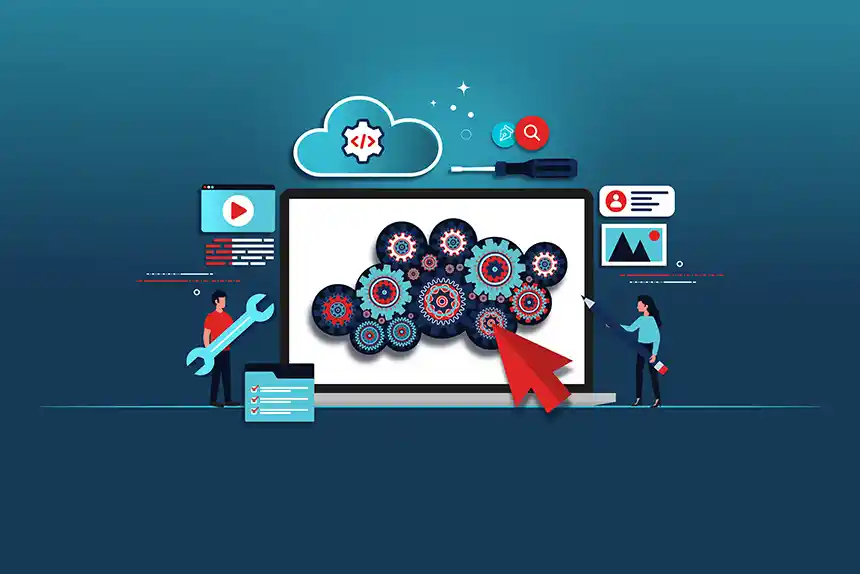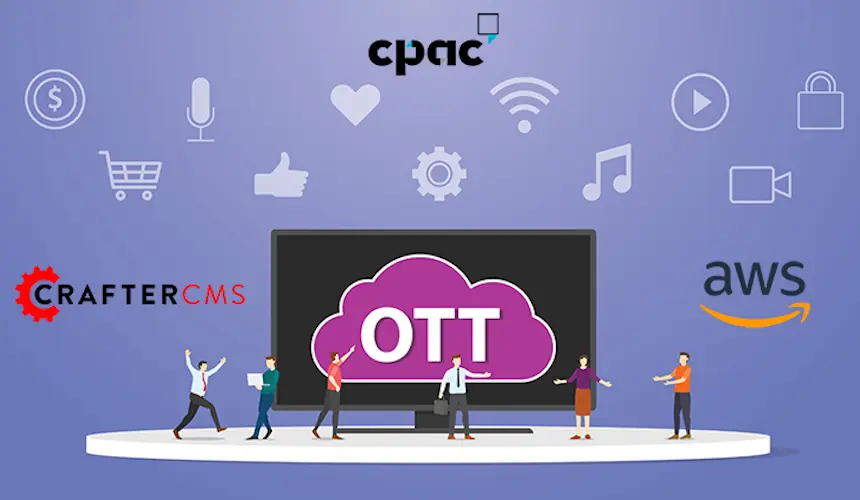Enterprise Headless CMS: Essential Features and Benefits

Amanda Lee

In the dynamic landscape of modern business, the ability to deliver exceptional digital experiences has become paramount. Enterprises are faced with the challenge of managing and delivering content across various channels while ensuring security, scalability, and efficiency. This is where an Enterprise Headless Content Management System (CMS) comes into play. In this comprehensive guide, we will explore the essential features and the myriad of benefits that an Enterprise Headless CMS offers, enabling organizations to stay competitive and future-ready in today's digital age.
The Evolution of Content Management
Traditional content management systems served as the foundation for many enterprises, offering tools to create, organize, and publish content on websites. However, as digital experiences expanded beyond websites to include mobile apps, IoT devices, voice assistants, and more, the limitations of traditional CMSs became apparent. This led to the rise of headless CMSs, and for larger organizations and fast growing startups, the Enterprise Headless CMSs.
What Is an Enterprise Headless CMS?
An Enterprise Headless CMS is a content management solution designed to meet the complex demands of large organizations. Unlike simple headless-only CMSs, an Enterprise Headless CMS not only separates the content creation and storage from the presentation layer, but also provides the scalability, performance, security, compliance, user-friendliness and more that larger organizations require. These headless "plus" capabilities allow for flexibility, scalability, and adaptability, making it suitable for enterprises with diverse content needs, multiple digital touchpoints, and higher rates of innovation.
Required Features of an Enterprise Headless CMS
1. Multi-Channel Content Delivery
An Enterprise Headless CMS must support multi-channel content delivery. It should enable organizations to create content once and deliver it seamlessly to websites, mobile apps, IoT devices, chatbots, voice assistants, and any other digital channels. This multi-channel capability ensures consistent brand messaging and user experiences across all touchpoints.
2. Scalability and Performance
Enterprises deal with large volumes of content and high user traffic. The CMS should be capable of handling this scale efficiently. It should provide horizontal scalability, load balancing, and content caching to ensure fast and reliable content delivery even during traffic spikes.
3. Security and Compliance
Security is non-negotiable for enterprises. The CMS should offer robust user authentication, access controls, data encryption, and compliance with industry regulations such as SOC2, ISO 27001, GDPR, HIPAA, or PCI DSS. It should also support security features like content versioning, auditing and rollback to mitigate risks.
4. Integration Capabilities
Enterprises rely on various software applications and services. The CMS should have robust integration capabilities, allowing seamless connections with e-commerce platforms, customer relationship management (CRM) systems, marketing automation tools, and more. Integration should be achieved through APIs, webhooks, and connectors.
5. Extensibility and Customization
No two enterprises are alike, and the CMS should reflect this by offering extensibility and customization options. Enterprises should be able to develop custom content types, workflows, and templates to meet their unique requirements. A rich library of plugins and extensions should be available to further enhance functionality.
6. Collaboration and Workflow Management
Enterprises often have multiple content creators and editors. The CMS should provide collaboration features such as role-based access, content approval workflows, content scheduling, and notifications to streamline content creation and management processes.
7. Content Analytics and Personalization
The ability to analyze content performance and personalize user experiences is crucial for enterprises. The CMS should offer integrations with content analytics tools to track user engagement, content effectiveness, and conversion rates. It should also support personalization features to deliver targeted content to users, and integrations with A/B testing tools.
8. Globalization and Localization
For enterprises with a global presence, the CMS should support globalization and localization features. This includes the ability to manage content in multiple languages, handle regional content variations, and support different time zones and currencies.
9. API-First Approach
An Enterprise Headless CMS should follow an API-first approach, providing well-documented and versatile APIs (such as RESTful APIs or GraphQL) for content delivery and management. This allows developers to integrate content seamlessly into various applications and platforms.
Benefits of an Enterprise Headless CMS
Now that we've covered the essential features, let's explore the numerous benefits that an Enterprise Headless CMS offers to large organizations:
1. Flexibility and Agility
Enterprise Headless CMSs empower organizations to adapt quickly to changing market trends and technologies. The decoupled architecture allows for rapid front-end development using modern frameworks, ensuring that enterprises can stay ahead of the competition.
2. Streamlined Content Management
Content authors and editors benefit from user-friendly interfaces that simplify content creation and management. Centralized content repositories, collaborative workflows, and version control mechanisms make content management efficient and error-free.
3. Improved Time-to-Market
Enterprises can launch new digital experiences faster with an Enterprise Headless CMS. The separation of content and presentation enables parallel development, reducing development time and accelerating time-to-market for new products and campaigns.
4. Cost-Efficiency
By eliminating the need for extensive back-end development and maintenance, an Enterprise Headless CMS reduces infrastructure costs and allows organizations to allocate resources more efficiently. This cost-effectiveness extends to content updates and changes, which can be implemented without extensive development efforts.
5. Enhanced User Experiences
Enterprises can deliver highly personalized and responsive user experiences across all digital channels. Content analytics and personalization tools enable organizations to understand user behavior and preferences, allowing for targeted content delivery and increased user engagement.
6. Improved SEO and Accessibility
Enterprise Headless CMSs provide the tools needed to optimize content for search engines and ensure accessibility compliance. This leads to better search engine rankings, increased organic traffic, and a broader audience reach.
7. Enterprise-Grade Security
Enterprises can trust an Enterprise Headless CMS to provide robust security features and compliance with industry regulations. This protects sensitive data, mitigates security risks, and safeguards the organization's reputation.
8. Seamless Integration
The CMS's integration capabilities enable organizations to create a unified digital ecosystem. Integration with e-commerce platforms, CRM systems, analytics tools, and other essential services enhances business operations and data-driven decision-making.
9. Global Reach
Enterprises can expand their reach to international markets effortlessly with globalization and localization features. This helps in building a global brand presence and connecting with diverse audiences.
10. Scalability
As enterprises grow, an Enterprise Headless CMS can seamlessly scale to accommodate increased content volume and user traffic. This scalability ensures a consistent user experience and minimizes the risk of performance issues.
11. Data-Driven Insights
Content analytics tools provide valuable insights into user behavior and content performance. Enterprises can use this data to make informed decisions, refine content strategies, and optimize user experiences continually.
CrafterCMS: The Headless CMS for Enterprises
Enterprise-centric features of CrafterCMS, ranging from user-friendly content authoring and support for DevContentOps to its unwavering commitment to security, Java-based foundation, and scalability.
User-Friendly Content Authoring
Efficient content authoring is at the heart of any successful enterprise CMS. CrafterCMS excels in this domain by providing a user-friendly and intuitive interface for content creators. Whether you're a marketing professional crafting compelling website content, a product manager creating engaging or a technical writer creating documentation, CrafterCMS streamlines the content creation, review, and publishing processes.
Key Content Authoring Features:
Rich Text Editor: CrafterCMS offers a rich text editor that simplifies formatting and styling, allowing authors to focus on content without the hassle of HTML coding.
Drag-and-Drop Experience Building: Users can easily upload and manage images, videos, and other media assets through a convenient drag-and-drop interface. Similarly, pages and other UI elements can be composed through drag-and-drop of pre-built components.
Content Versioning: The system keeps a history of content revisions, making it easy to review and revert to previous versions when needed.
Content Preview: Authors can preview how their content will appear across various devices and screen sizes, ensuring a consistent user experience.
Workflow and Approval: CrafterCMS supports customizable workflows, enabling content to go through approval processes before publication.
Scheduled Publishing: After previews and approvals are complete, editors and publishers can schedule content updates to go live immediately or at a future date and time.
DevContentOps Processes
DevContentOps is the practice of integrating content management with modern development and IT ops workflows, fostering collaboration between content creators and developers. CrafterCMS is designed with unique support for DevContentOps processes, bridging the gap between content and development teams and driving large gains in enterprise productivity.
Key DevContentOps Features:
Content as Code: Content can be managed in a code-centric manner, allowing developers to easily develop and test using the latest production content, and deploy scripts and code using familiar development tools and processes. Content and code moves between environments (from developer machines to QA to Production and back) with simple Git commands.
Git-based CMS: CrafterCMS seamlessly integrates with Git as its content repository, enabling all content to be stored with a sophisticated version control system and facilitating collaboration among distributed teams. Content authors/editors benefit from all the versioning capabilities of Git, without ever having to know Git.
Extensible Content APIs: Developers can access content programmatically through well-documented APIs (RESTful and GraphQL), making it easy to integrate content into various applications and platforms. CrafterCMS also supports server-side scripting with Javascript and Groovy to extend its APIs, create new APIs, and easily integrate with third-party enterprise applications.
Easier Headless CMS Development: CrafterCMS operates as a headless CMS, providing the flexibility for developers to build custom front-end applications using their preferred technologies, whether that be Javascript based technologies such as React, Angular or Vue, or HTML-based technologies such as Freemarker or Bootstrap, or AR/VR based technologies such as A-Frame, or native mobile application frameworks such as React Native, Flutter or Swift (Apple) and Kotlin (Android).
Security and Compliance
Security is a top priority for enterprises, and CrafterCMS takes security seriously. It offers a range of features and practices to ensure the integrity, confidentiality, and availability of your content and data.
Key Features of a Secure CMS:
Role-Based Access Control: Administrators can define granular roles and permissions, restricting access to sensitive content and functions based on user roles.
Data Encryption: Content and data are encrypted both in transit and at rest, safeguarding against data breaches and unauthorized access.
Compliance: CrafterCMS complies with industry regulations such as GDPR, HIPAA, and PCI DSS, helping enterprises meet legal and regulatory requirements.
Security Patch Management: The platform actively monitors and addresses security vulnerabilities, ensuring timely security updates and patches.
Java-Based CMS
CrafterCMS is built on Java, the robust and well-established programming language that has been trusted by enterprises for years. The use of Java brings several advantages to the table.
Key Benefits of a Java CMS:
Performance: Java's performance capabilities enable CrafterCMS to handle high traffic loads efficiently, ensuring fast response times for users.
Scalability: Java's scalability features allow CrafterCMS to scale horizontally, accommodating growing content volumes and user traffic seamlessly.
Reliability: Java's reliability and stability make CrafterCMS a dependable platform, reducing the risk of downtime and system failures.
Scalability
Enterprises often require CMS solutions that can grow with them. CrafterCMS's scalability ensures that it can meet the demands of even the largest organizations.
Key Benefits of Scalability:
Horizontal Scalability: CrafterCMS’s content delivery system can be deployed in a stateless and serverless manner with no external database dependencies, enabling easy spin-up of additional delivery servers.
Load Balancing: Load balancing ensures even distribution of incoming traffic, preventing any single point of failure and enhancing system reliability.
Content Delivery Networks (CDNs): Integration with CDNs allows content to be distributed globally, reducing latency and improving user experiences for international audiences.
High Availability: CrafterCMS can be configured for high availability, ensuring that content remains accessible even during individual server outages or maintenance.
Private SaaS CMS
CrafterCMS's private SaaS offering extends its enterprise-grade features and benefits to the realm of cloud-based content management. With this solution, enterprises gain the advantage of CrafterCMS's robust capabilities while enjoying the scalability, flexibility, and cost-efficiency of a private SaaS model. The private SaaS offering ensures that organizations have dedicated resources and a secure environment tailored to their specific needs, guaranteeing optimal performance and data privacy.
Here are some of the key enterprise features and benefits of CrafterCMS's private SaaS:
Private SaaS CMS Features:
Dedicated Resources: With CrafterCMS's private SaaS, enterprises have access to dedicated computing resources, ensuring consistent and reliable performance even during traffic spikes.
High Availability: Private SaaS environments are designed for high availability, reducing the risk of downtime and ensuring uninterrupted content delivery to users.
Scalability: The solution is built to scale seamlessly, accommodating growing content volumes and user traffic without the need for extensive infrastructure management.
Managed Security: CrafterCMS's private SaaS includes robust security measures, with dedicated teams monitoring and addressing security vulnerabilities and compliance requirements.
Customization: Enterprises can tailor their private SaaS environment to meet their specific requirements, including custom configurations, integrations, and security policies.
Compliance: The private SaaS offering ensures that enterprises can maintain compliance with industry-specific regulations such as GDPR, HIPAA, and PCI DSS.
Global Content Delivery: Integration with Content Delivery Networks (CDNs) allows for global content distribution, reducing latency and improving user experiences for international audiences.
Private SaaS CMS Benefits:
Optimal Performance: Dedicated resources and managed infrastructure ensure optimal performance, even for high-traffic websites and applications.
Data Privacy: Private SaaS environments provide enhanced data privacy and security, making them suitable for handling sensitive enterprise data.
Cost-Efficiency: By outsourcing infrastructure management to the CrafterCMS as the SaaS provider, enterprises can achieve cost-efficiencies, reducing the need for in-house IT resources.
Scalable Growth: The solution's scalability allows enterprises to grow without worrying about infrastructure constraints, supporting future expansion plans.
Reduced Maintenance Burden: Private SaaS eliminates the need for organizations to manage and maintain the underlying infrastructure, freeing up IT resources for more strategic initiatives.
Reliability: High availability and managed security measures ensure reliability, reducing the risk of service disruptions and data breaches.
Tailored Solutions: Enterprises can customize their private SaaS environment to align with their unique content management needs and business objectives. For example, server-side development and rendering is critically important to headless CMS development, and is a crucial missing piece of most other vendors.
Enhanced Collaboration: With a centralized and scalable platform, collaboration between content creators, developers, and other teams becomes more efficient, supporting agile content workflows.
CrafterCMS's private SaaS offering, Crafter Cloud, combines the power of an enterprise-grade content management system with the benefits of a managed and dedicated cloud infrastructure. It empowers organizations to deliver exceptional digital experiences while ensuring performance, security, scalability, and compliance. This tailored approach allows enterprises to focus on their core business activities while CrafterCMS handles the complexities of content management and infrastructure management.
Summary
In the modern digital age, enterprises must leverage the capabilities of an Enterprise Headless CMS to thrive in a competitive landscape. With features like multi-channel content delivery, scalability, security, ease of integration and customization, and DevContentOps, an Enterprise Headless CMS empowers organizations to streamline content management, enhance user experiences, and adapt to the evolving digital landscape. The benefits of flexibility, efficiency, cost-effectiveness, and global reach make it indispensable for large enterprises seeking to stay at the forefront of digital innovation and deliver exceptional digital experiences.
To learn more, read our White Paper The World of Headless CMS: Everything You Need To Know About Headless Content Management
Related Posts

Websites Are Dead?

Mike Vertal

No-Code Experience Building for Marketers & Designers

Amanda Lee

The Future of Web Experiences: From Browsing and Searching to Conversational AI

Mike Vertal

Is Your CMS MACH-Ready? A Practical Guide for Enterprise Architects

Sara Williams
Related Resources
-

CrafterCMS at eBay: The Universal Content Platform for eBay.com
Webcast
-

Personalized Digital Experiences for a Cruise Liner
Webcast
-

Introducing CrafterCMS v4.0
Webcast
-

Modernizing Video Delivery and Content Management at CPAC, A Canadian Nationwide Broadcaster
Webcast
-

Building React Apps on a Headless CMS
White Paper





